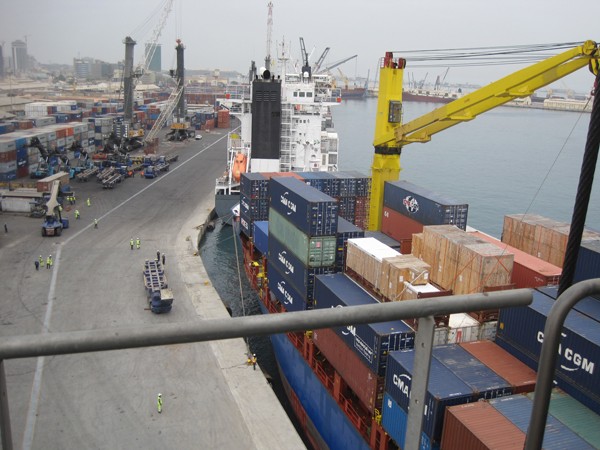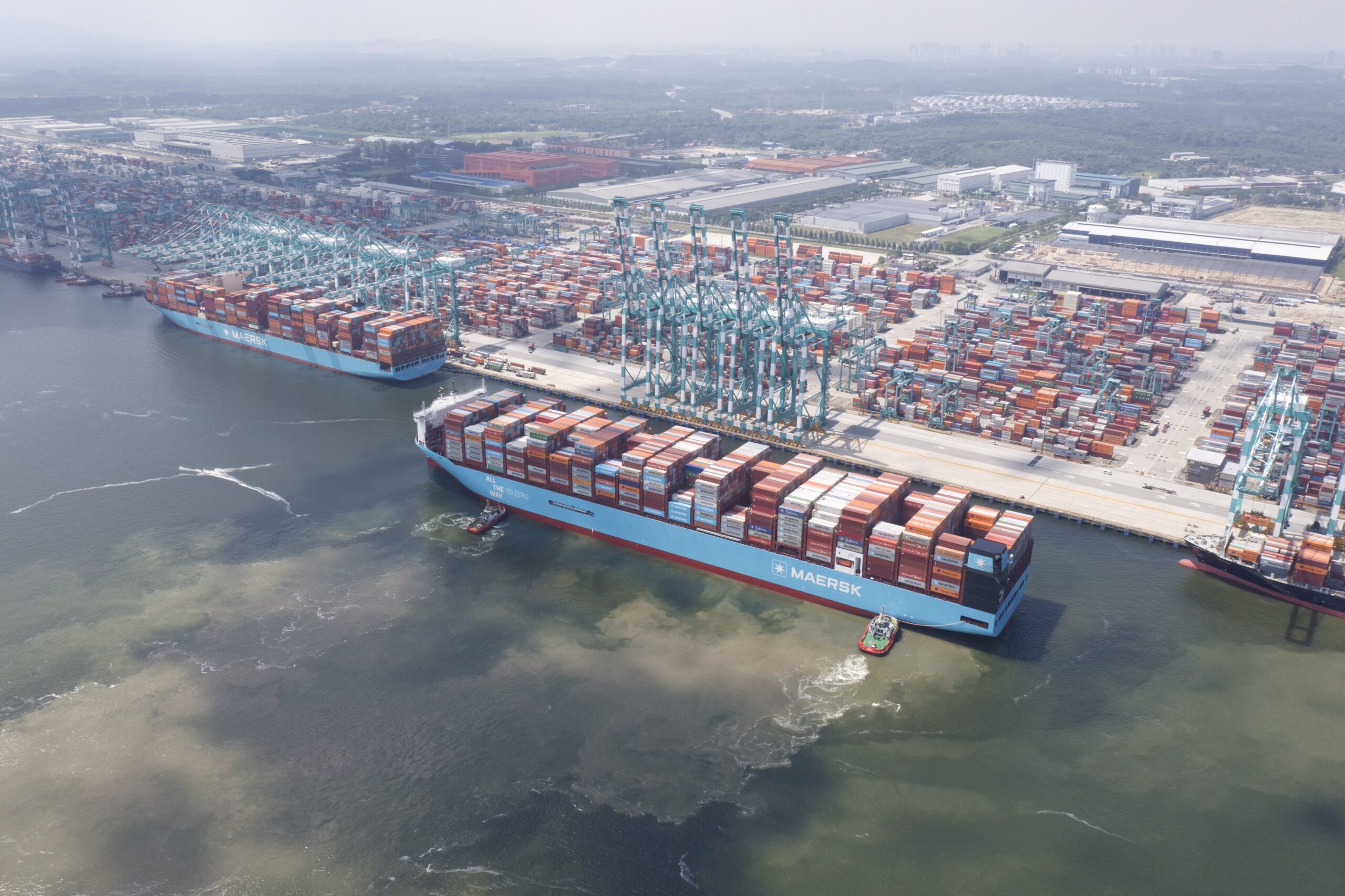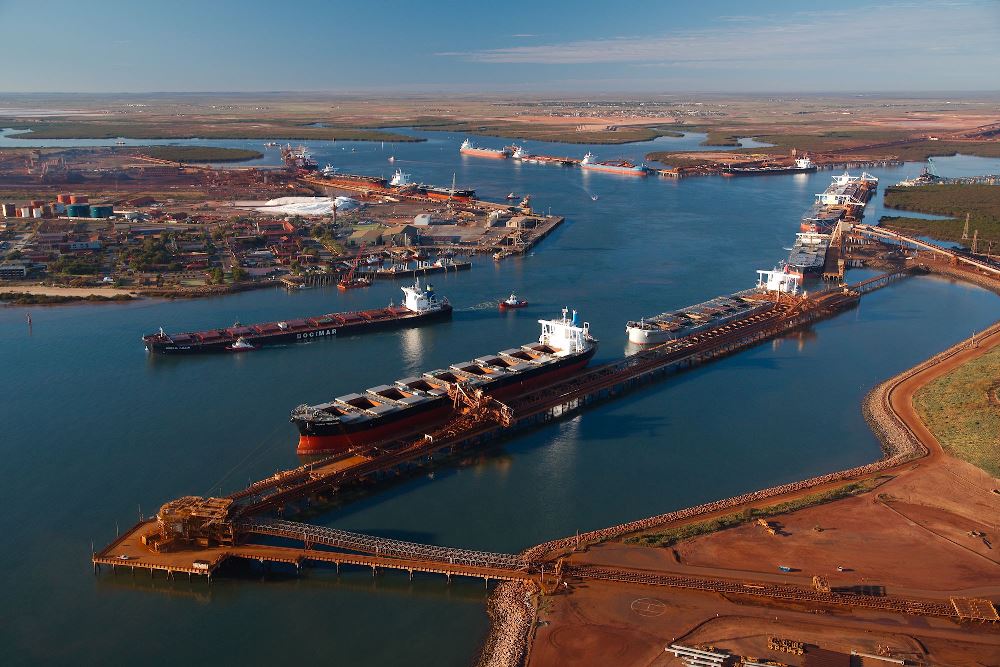Luanda Container Terminal Angola, image courtesy APM Terminals
By Colin McClelland and Manuel Soque
April 25 (Bloomberg) — Angola’s main port installed new cranes and provided more training to reduce its cargo unloading time by 80 percent as the government reviews a plan to build Africa’s biggest shipping terminal.
Vessel turnaround times at Luanda were cut to an average of three days last year from 16 days in 2008, Alberto Antonio Bengue, port administrator for commercial, safety and environmental affairs, said in an interview at his office. That compares with 2 1/2 days for container ships at South Africa’s Durban port, the continent’s busiest.
“We have invested in modern loading and unloading infrastructure, human capital and a port pier,” Bengue said. “We plan to increase the number of containers handled to more than a million by the end of this year.”
Container traffic at Luanda has more than doubled over the past five years to 912,900 20-foot equivalent units in 2013, according to Bengue. While that’s only a third of the containers handled at Durban last year, Angola is planning a new port at Dande, 50 kilometers (31 miles) north of the main Empresa Portuaria de Luanda EP. That facility would challenge the South African port as a regional hub for landlocked countries such as copper-rich Zambia, Bengue said.
Busiest Port
Durban, Africa’s busiest port according to the Port Management Association of Eastern and Southern Africa, handled 44.8 million metric tons of cargo in 2013-14, the port’s Business Strategy Manager Marina Petersen said on April 24.
Luanda port processes about 80 percent of cargo shipped to Angola, where imports account for almost all of manufactured goods in the market as the country recovers from a 27-year civil war that ended in 2002.
Of the 11.3 million tons of cargo unloaded at Luanda last year, 70 percent was in containers and the rest was bulk, Bengue said. That compares with a total of 6 million tons in 2007, he said. The port received 1,119 ships last year and is targeting a 4 percent increase in 2014, the administrator said.
Dande will probably handle ships with 13,000 containers and it may cost billions of dollars to build, Bengue said. No estimates on costs, construction dates or the scale of the proposed port have been set as President Jose Eduardo dos Santos’s office reviews the project, he said.
“This port, which will be bigger than Durban, will be a threat to other ports in the region in terms of competition,” Bengue said. “The hub port will be strategically well located in a way that cargo from South and Central America, the U.S., and even Europe and Asia won’t take long.”
Oil Suppliers
About 60 percent of cargo arriving in Luanda is construction material, Bengue said. It’s processed through five terminals including Sonils, a unit of state-owned oil company Sonangol EP, where unloading occurs for most supply ships from oil companies operating offshore.
Chevron Corp., Total SA, and BP Plc pumped most of the OPEC member’s 1.52 million barrels of oil last month, according to data compiled by Bloomberg. Angola is Africa’s biggest oil producer after Nigeria.
A freight railway line that was supposed to start more than a year ago linking the port with a terminal 30 kilometers inland at Viana will begin commercial service next month after new locomotives are bought, Bengue said. The rail shipping cost may undercut the $250 per container fee charged by truckers for the same route, he said.
No Piracy
The reported hijacking of a Greek-owned tanker carrying 60,000 tons of diesel in January isn’t a sign of piracy drifting south to Angolan waters from the Gulf of Guinea where it’s common, Bengue said. The ship, the Kerala, had been anchored offshore from Luanda before it was diverted to Nigeria. Angolan authorities said the crew staged the hijacking.
“While we only focus on security within the port not outside, where it’s handled by the Port Captaincy Office, I can assure you that we haven’t recorded any piracy action,” Bengue said. “We have trained competent personnel to protect any vessels in the port and our facilities.”
Exports including iron ore and cars are limited to about 5 percent of the port’s volume, Bengue said.
Automoveis CSG-Angola Lda. in Luanda assembles 30,000 pickups, four-wheel-drive vehicles and buses a year made by Wuhan, China-based Dong Feng Motor Corp., according to CSG’s website.
Copyright 2014 Bloomberg.
–With assistance from Kamlesh Bhuckory in Johannesburg.

 Join The Club
Join The Club











